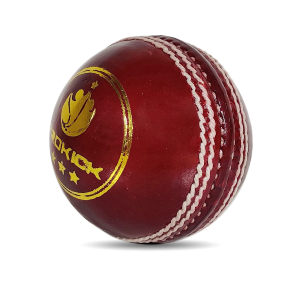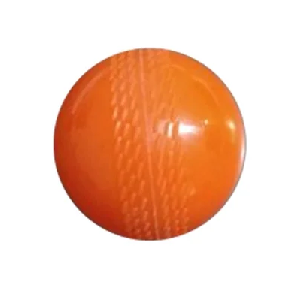Cricket has long been cherished worldwide, with players at every skill level striving to master their game. While the traditional leather cricket ball remains a symbol of the sport, synthetic cricket balls have gained popularity for training, casual games, and beginner-level matches. But what exactly is a synthetic cricket ball, and why is it becoming so widely used?
In this guide, we’ll explore everything you need to know about synthetic cricket balls, from types to benefits and when to use them.
What is a Synthetic Cricket Ball?
A synthetic cricket ball is made from synthetic materials rather than the traditional leather used in professional balls. Typically crafted from rubber or composite synthetic leather, these balls mimic the look and feel of a leather cricket ball while offering distinct advantages. Synthetic balls are durable, affordable, and require less maintenance, making them ideal for training and casual play. They can be used on various surfaces, from grass to concrete, making them a versatile choice for cricketers.
Types of Synthetic Cricket Balls
Batting practice tools help players improve their timing, hand-eye coordination, and shot selection. Here’s a look at some of the most effective tools for batters:

I) Synthetic Leather Ball
This ball looks similar to a leather cricket ball but is made from synthetic materials. It's popular in practice sessions and is often used in junior leagues, as it is less costly and more durable than leather balls.

ii) Synthetic Rubber Ball
Known for its resilience, the synthetic rubber ball is perfect for casual or recreational cricket games. It provides a decent bounce and is ideal for street or park cricket due to its ability to handle rough surfaces without getting damaged.

iii) Soft Synthetic Ball
This ball is lightweight and softer than other cricket balls, making it perfect for beginners and younger players. Soft synthetic balls are commonly used for indoor cricket, where safety is a priority.

iV) White Synthetic Ball
With a bright white color, this ball is often used for training sessions in low light or for night games. The visibility of a white synthetic ball makes it a popular choice for specialized training exercises.
Advantages of Using Synthetic Cricket Balls
- Durability: Synthetic cricket balls are designed to last longer than leather balls, especially on rough surfaces. They are less likely to wear out or lose shape.
- Affordability: Compared to traditional leather cricket balls, synthetic balls are budget-friendly, making them an excellent option for frequent practice.
- Safety: Softer varieties of synthetic balls provide safer options for youth and beginners. They are less likely to cause injuries, allowing players to build confidence.
- Low Maintenance: Leather balls need regular oiling and conditioning to maintain their quality, but synthetic balls require little to no upkeep.
Disadvantages of Synthetic Cricket Balls
- Performance Differences: Synthetic balls do not replicate the seam movement, bounce, or swing of a leather ball as effectively, which might impact high-level training.
- Weather Impact: Synthetic materials react differently to weather conditions; for instance, synthetic rubber may lose bounce in cold weather, while synthetic leather could become slippery when wet.
When to Use a Synthetic Cricket Ball
1) Training
For practicing skills like bowling or fielding, synthetic cricket balls are ideal. Players can train without worrying about wear and tear on more expensive leather balls.
2) Casual Games
Synthetic balls are perfect for street cricket or friendly games. They can be used on various surfaces, including hard pitches, concrete, and grass.
3) School Matches and Junior Cricket
Due to their affordable price and safe design, synthetic balls are widely used in school matches and junior cricket leagues, allowing young players to build skills safely.
Care and Maintenance of Synthetic Cricket Balls
While synthetic cricket balls require less maintenance than leather balls, a few tips can help extend their lifespan:
- Storage: Store the balls in a dry, cool place to avoid damage from excessive heat or moisture.
- Cleaning: Wipe synthetic balls with a damp cloth to remove any dirt or grime after each game. Avoid using harsh chemicals, which can damage the synthetic material.
How to Choose the Right Synthetic Cricket Ball
When selecting a synthetic cricket ball, consider the following:
- Size and Weight: Ensure the ball is the correct size and weight for the intended players (junior, adult, or specific training purposes).
- Material: Decide between synthetic leather or rubber based on the playing conditions. Rubber balls are more durable on rough surfaces, while synthetic leather offers a closer feel to leather cricket balls.
- Purpose: Think about how the ball will be used, whether for indoor practice, training, or casual games, to choose the best option for your needs.
Synthetic Cricket Balls vs. Leather Cricket Balls: Key Differences
Feature | Synthetic Cricket Ball | Leather Cricket Ball |
|---|---|---|
Durability | High, suitable for rough surfaces | Moderate, best on turf |
Cost | Affordable | More expensive |
| Performance | Less swing, different seam behavior | Authentic swing and bounce |
| Maintenance | Low maintenance | Requires regular care |
| Usage | Training, casual games, juniors | Professional and advanced play |
Popular Brands and Options for Synthetic Cricket Balls
Many well-known cricket brands offer synthetic cricket balls in various types. Brands like SG, SS, and Kookaburra provide durable and affordable options suitable for both beginners and professionals. You can find a range of synthetic balls online or at sports retailers, catering to different needs and price points.
Conclusion
Synthetic cricket balls have become a popular alternative to leather balls, especially for training and recreational games. They are affordable, durable, and versatile, making them suitable for all ages and skill levels. Whether you’re a beginner learning the basics or an experienced player looking for a low-cost training ball, synthetic cricket balls offer a practical option to enhance your game.
Frequently Asked Questions (FAQ's) About Synthetic Balls
Are synthetic cricket balls safe for children?
Yes, synthetic balls, particularly soft varieties, are ideal for children due to their lighter weight and lower injury risk.
Can synthetic balls be used in professional matches?
No, professional matches use leather balls. Synthetic balls are typically reserved for training, casual games, and junior leagues.
How long does a synthetic cricket ball last?
With proper care, synthetic balls can last for many games, especially in training and recreational settings.















